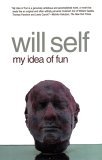|
|
 David Anderson will talk about “Building a high trust culture in your software engineering organisation” on December 10th in Antwerpen, Belgium. David Anderson will talk about “Building a high trust culture in your software engineering organisation” on December 10th in Antwerpen, Belgium.
The Javapolis conference has provided the xp.be group with a BOF room.
Register to attend this presentation.
I’m looking forward to hear from and talk to David. I’m very interested in the application of the Theory of Constraints in agile software. Now, David is exploring a more Lean , Kanban based approach.
If you’re really ‘extreme’ you have to question everything, for example the value of a (large) backlog. According to lean principles, this is work in progress, inventory, waste. What David explains comes closer to a flow-based system. More about this at David’s Javapolis session.
But that’s NOT the topic of this talk. The topic is:
“If the essence of agile development is rooted in high levels of trust, how do you set about creating a high trust culture? When so much of what you and your team may have experienced in their career is based in an assumption of low levels of trust – contract negotiation, audit, finger pointing and blame, how do you set about reversing that and building a high trust culture?
What is trust? How do you build trust between individuals and is it possible to build trust between teams and across organizations? What are the benefits of high levels of trust? And why it is essential if your agile and Lean organization is to be “built to last”?”
Does your team or organisation have enough trust? If not, come to the session. I’ll post a summary after the session.
See you there.
Okay, okay, I haven’t written a lot lately.
I haven’t been thinking a lot lately.
I have read a lot lately. I’m still thinking because of that.
I have done a lot lately. I’m still buzzing with energy because of that.
XP Days Benelux;Bootcamp; Toyota Talent;Consciousness; Protocols; Evolution; Lean accounting;Free will;XP Days London;Throughput accounting;Scary ideas;Innovation;Software For your Head; Agile 2008; sessions, sessions, sessions; XP Day Switzerland; agile business and some stuff I can’t talk about yet.
Take your pick, take a fieldstone, any fieldstone. There should be enough stones right there to keep me building for a while
Kurt Vonnegut died yesterday. So it goes.
Vonnegut’s writing is a wonderful mixture of dry wit, philosophy, different literary styles (including science fiction, which is how I discovered his writing) and playful use of language and writing techniques.
Reviews of his work often contain the words ‘cynic’ and ‘pessimist’. I’ve never understood that.
Vonnegut was an idealist. His belief in human goodness is equal to that of a John Steinbeck, whose denizens of “Cannery Row” and “Tortilla Flat” create havoc out of the good of their heart. And we like those characters, because, they try. And when their actions create chaos, they try again.
Tiger got to hunt,
Bird got to fly;
Man got to sit and wonder, “Why, why, why?”
Like all idealists, Vonnegut was often disappointed. Disappointment is not important, it’s trying to do good that’s important. And trying again when you fail. That’s why we’re here, as Elliot Rosewater would say.
Eugene Wallingford says it better than me. He also compiled the “Books of Bokonon“.
“Every passing hour brings the Solar System forty-three thousand miles closes to Globular Cluster M13 in Hercules – and still there are some misfits who insist that there is no such thing as progress.” – Ransom k. Fern in “The Sirens of Titan”.
Read his books. And try. That’s all we can do.
“I am a humanist, which means, in part, that I have tried to behave decently without any expectation of regards or punishments after I’m dead. My German-American ancestors, the earliest of whom settled in our Middle West about the time of our Civil War, called themselves “Freethinkers,” which is the same sort of thing. My great grandfather Clemens Vonnegut wrote, for example, “If what Jesus said was good, what can it matter whether he was God or not?”
I am honorary president of the American Humanist Association, having succeeded the late, great, spectacularly prolific writer and scientist, Dr. Isaac Asimov in that essentially functionless capacity. At an A.H.A. memorial service for my predecessor I said, “Isaac is up in Heaven now.” That was the funniest thing I could have said to an audience of humanists. It rolled them in the aisles. Mirth! Several minutes had to pass before something resembling solemnity could be restored.” – Kurt Vonnegut
Monday keynote
Unfortunately we arrived too late to attend the keynote. The train was delayed. The tube on the Northern line was full. The tube on the Central was halted because someone was ill. When we arrived in the Ironmonger’s Hall, the keynote was already in full swing and the hall was packed. Instead of Joshua Kerievsky’s keynote, some coffee to wake up and time to meet the “conference-acquaintances” and hear what they’ve been up to since we last met.
Cooking with conflict
I went to the “Turning up the heat without getting burnt” session by Joseph Pelrine and Ben Fuchs. I couldn’t attend this session at XP Days Benelux because my session was scheduled at the same time. In the first half of the session, Joseph and Ben talked about conflicts, explored our attitude towards conflict with a small excercise and offered us a cooking metaphor for team pressure. Too little heat and the team stagnates; too much heat and they burn. As a cook/coach/leader you need to keep the team at the right “cooking” temperature. Some conflict is good for you.
In the second half, I was asked to take part in a “Scrum from hell” game. In this excercise, a Scrum Master is faced at the daily standup with a team whose members may or may not have a secret goal (like talking as much as possible, helping the Scrum master, not doing anything and hiding this fact…).
I’ve played this game before. I was a bit nervous when Joseph asked me to participate. I thought this was because I had to act in front of an audience and not use my native language, so I overcame my hesitation. It was only after the session, after I had some time to think about it, that I understood why I was hesitant: the excercise throws the scrum master into an impossible situation. They have to suffer the diabolical antics of the hidden agenda players. And then the exercise is over. We don’t get any advice on how to handle such a situation. We are not shown any techniques we could use. We don’t re-run the simulation to see if the techniques work. In the end, what do we have? We’ve had a jolly good laugh at the expense of the sweating scrum master. And then we move on. It wasn’t clear to me how this excercise related to the rest of the session.
What would I have done as a scrum master in this situation? I would stop the standup. The only way to win this game is not to participate in it. I would repeat the rules of the standup and ask for a “check in” (one of the protocols of “Software for your Head“). I would check in first: “I’m willing to work with this team, following these rules. I’m mad. I’m in.”. Those who are willing to work in the team, follow the rules and be held accountable for the results, can check in too. Those who don’t, can leave now. That would create a conflict, but one which would clarify what everyone stood for. Hey, a conflict! Wasn’t this what this session was about?
Lessons learned:
- Some conflict is good
- Listen to my body. It’s a lot smarter and faster than my brain. It took my brain half a day to understand what my body had understood immediately after Joseph asked me to participate: I find the Scrum from Hell a useless and hurtful game.
Are we nearly there yet?
I had been asking myself the very same question as we traveled from Belgium to the Ironmongers Hall. Clearly, we had not planned our journey well enough to arrive in time. I went to the session because of the promise of interaction and discussion and because tracking is useless unless we can tell when something is done. Ivan Moore was a bit flustered because of the large turnout. Because of the large group, there wasn’t a lot of interactivity, but there were many questions and remarks. The session confirmed me in my preference to estimate using “story points”, not “ideal days” or real time.
The day ended with a goldfish bowl discussion on simplicity. As a severe treppenwitz sufferer, such a fast-moving discussion is not the ideal format for me 🙂
It was enjoyable to watch the dicussion go in several directions, but there wasn’t anything memorable that I remembered from the session. Maybe that has to do with the last activity of the evening: trying to make a dent in Google’s finances at their sponsored drink in a pub in “Little Britain”: free drink, food, t-shirts and gadgets. We had a long discussion with Joseph Pelrine and Ben Fuchs. Robert Chatley and Giovanni Asproni (XP Day organizers) looked more relaxed than this morning.
I didn’t stay too long. Next day was another full conference day and I had a session to present.
Draw me a process
Rob and I made a small, but useful change to the “I’m not a Bottleneck! I’m a free man!” session at Agile North. During the second half of the session, we ask the participants to draw their process. Many participants have difficulty doing this. Where do you begin? Where do you end? Where are the boundaries? What to include, what to exclude?
At least now we know where to start…
Start at the end
 We now tell the participants to start with the customer. Our work only generates “throughput” (value to the company) when the customer pays us in some way for something of value we give them. So, start by drawing the customer. We now tell the participants to start with the customer. Our work only generates “throughput” (value to the company) when the customer pays us in some way for something of value we give them. So, start by drawing the customer.
From the customer, work backwards. What does the customer receive, that they value? A piece of running software? Where does that come from? And so on, up the value stream. We noticed that the participants didn’t get stuck drawing their process. It did take some effort to get started. We are so used to thinking forward. It may take a while before you switch from “The customer gives requirements” to “The customer receives running, valuable features”.
The idea comes from the practice of Lean consultants to walk and map the value stream backwards, from the customer to the source materials. This helps you keep the customer perspective and see opportunities for “Pull” scheduling.
In Will Self’s novel “My idea of fun“, the main character and his evil guru (“The Fat Controller”) take a mental voyage from a cotton shirt they bought, all the way back to the cotton pickers near the Nile. Will Self invented the term “Retroscending” for this exercise. Next time, you think about your software process, try to retroscend.
|
 David Anderson will talk about “Building a high trust culture in your software engineering organisation” on December 10th in Antwerpen, Belgium.
David Anderson will talk about “Building a high trust culture in your software engineering organisation” on December 10th in Antwerpen, Belgium.